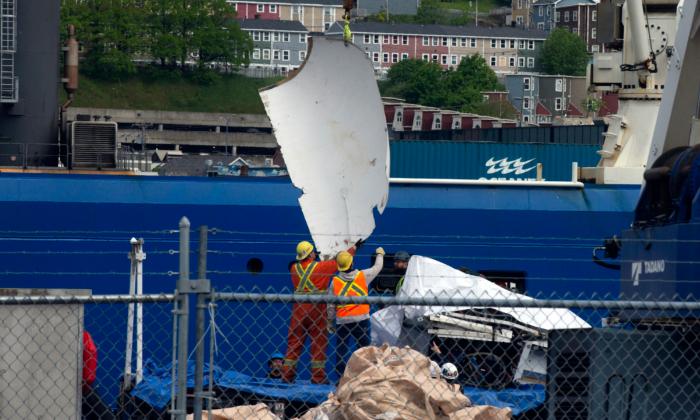The U.S. Coast Guard (USCG) announced on Wednesday that debris and “presumed human remains” have been successfully retrieved from the seafloor at the location where officials say the OceanGate submersible imploded while en route to the Titanic wreckage last week.
In a statement released on Wednesday, the USCG confirmed, “United States medical professionals will conduct a formal analysis of presumed human remains that have been carefully recovered within the wreckage at the site of the incident.”
The submersible tourist vessel imploded about 13,000 feet below the surface of the ocean near the wreckage of the Titanic ship, USGC officials said last week. All five men aboard the OceanGate Titan submersible perished.

The arrival of the M/V Horizon Arctic, a Canadian vessel, played a crucial role in aiding the recovery efforts. The Horizon Arctic deployed a remotely operated vehicle (ROV) owned by Pelagic Research Services to comb the ocean floor in the vicinity of the Titanic wreckage, searching for remnants of the submersible.
Marine Board of Investigation (MBI) Chair Captain Jason Neubauer, the Coast Guard’s chief investigator, expressed gratitude for the extensive international and interagency support received during the operations “to recover and preserve this vital evidence at extreme offshore distances and depths.”

The twisted debris of the vessel was photographed being unloaded at a Canadian pier after it was pulled from the North Atlantic Ocean. It will be transported to a U.S. port aboard a USCG cutter. The MBI will oversee further analysis and testing of the recovered items.
Neubauer said the retrieved evidence will provide critical insights into the cause of the tragedy for investigators from multiple jurisdictions. He emphasized the need to prevent a recurrence of similar incidents, saying, “There is still a substantial amount of work to be done to understand the factors that led to the catastrophic loss of the Titan and help ensure a similar tragedy does not occur again.”
According to Carl Hartsfield of the Woods Hole Oceanographic Institution, analyzing the physical material from the recovered debris could provide important clues about the incident involving the Titan submersible.
“Certainly, all the instruments on any deep sea vehicle, they record data. They pass up data. So the question is, is there any data available? And I really don’t know the answer to that question,” he said on Monday.

At a press conference in Boston on Wednesday, Neubauer said his primary goal is to prevent a similar tragedy “by making the necessary recommendations to enhance the safety of the maritime domain worldwide.”
The USCG and Canada’s Transportation Safety Board are investigating the cause of the undersea implosion of the Titan submersible. The incident has raised concerns about the unregulated nature of these expeditions. The recovery of evidence from the Titan submersible marks a significant milestone in uncovering the circumstances that led to its destruction.
The USCG announced that a public hearing will be held to thoroughly examine the tragedy. In preparation for the hearing, the MBI will continue gathering comprehensive evidence and conducting witness interviews.
The International Maritime Organization (IMO), the UN’s maritime agency, currently has voluntary safety guidelines for tourist submersibles. The IMO has stated that investigative reports of the Titan incident will be reviewed and member states can propose stronger regulations to be considered at the next Maritime Safety Committee session in May 2024.
OceanGate Expeditions, the company that owned the Titan, was based in the United States, while the submersible was registered in the Bahamas. The Titan’s mother ship, the Polar Prince, was from Canada.
The five crew who perished were identified as Stockton Rush, 61, the CEO of OceanGate; Paul-Henri Nargeolet, 77, a distinguished Titanic expert from France; Hamish Harding, 58, a wealthy British entrepreneur; Shahzada Dawood, 48, a prominent businessman from Pakistan; and his 19-year-old son, Sulaiman Dawood.
Stockton, the submersible’s pilot, faces scrutiny for allegedly disregarding safety concerns and charging wealthy tourists $250,000 each to explore the famous 1912 shipwreck.





